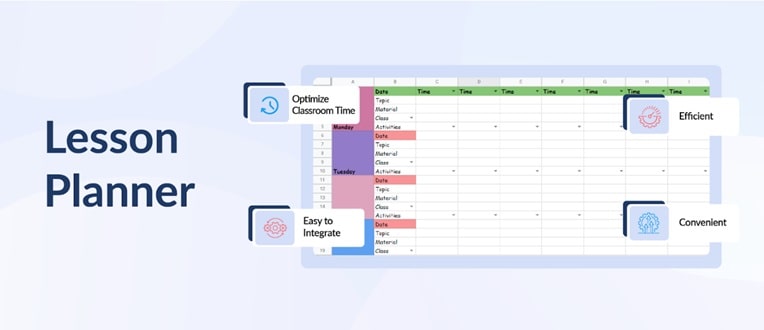Do you desire to teach effectively? Then, You should prioritize well-equipped lesson plans. This helps present material in a clear and organized manner, making it easier for students to understand and retain. An effective teacher lesson planner should consider various aspects such as the content you'll teach, the assessments you'll use to evaluate learning, and your classroom management skills to ensure an effective and engaging learning experience.
Discover tips for creating efficient lesson plans that improve students' learning experience in this comprehensive guide.

1. Define a Unique Learning Goal: As a teacher, start by creating a lesson plan unique to you. Determine what you want your students to know and achieve by the end of the class. Goals should be determinable, easy to attain, and aligned with your curriculum; these serve as a guide for your lesson plan.
2. Understanding your Student: it's important to understand each talent, likes, and learning methods unique to your student. Employ different educational methods to meet students' requirements.
3. Involve Students in Activities: Introduce a variety of activities to interest kids and assist time to shuffle along different learning styles. Group assignments, hand-crafting projects, conversation talks, and social media presentations should be used.
4. Create a Clear Lecture Plan: Learn to arrange your works clearly for students to easily comprehend. Capitalize subheadings when necessary, highlight points, and use numbering modes to aid viability and fast flow of comprehension among students. Also, give an evaluation and summary at the end of each topic.
5. Use Working Teaching Methods: You can explore a variety of different teaching methods to aid different learning styles. This may include direct instruction, interrogative, cooperative learning, and problem-solving activities. Adapt your teaching methods in response to students' feedback and understanding.
6. Employ Formative Assessment: use formative assessment tools to assess students' understanding throughout the class. This assessment helps fast feedback, making you know the student's level of comprehension. You can use quizzes, polls, and group discussions while carefully changing teaching methods from time to time to keep the students interested in check.
7. Use different education tools: This approach recognizes that students have different readiness levels, learning profiles, and interests, and it aims to create a unique and active learning environment for all. It is important to watch out for students' readiness levels and quickly impact them without that time frame. Make provision for additional assistance for students struggling with topics and strengthen assistance to those doing well.
8. Employ Hands-on Experience: Using real-life events, and tools does not only interest the student but significantly leaves a lasting knowledge about the topic in them. Simplify themes to their practical life. This encourages learning and active participation
9. Review and Revise: After teaching, take time to review lesson plans, use feedback, student response, and participation as a guide, and rearrange plans where necessary.
Effective lesson planner requires thorough preparation, adaptability, and deep comprehension of students' requirements. By following these comprehensive steps and strategies, teachers can create lesson plans that promote active learning, and encourage critical thinking and continuous learning. Keep in mind that each classroom is unique, so feel free to customize your lesson plans to suit your students' requirements and encourage an interactive and engaging learning atmosphere.